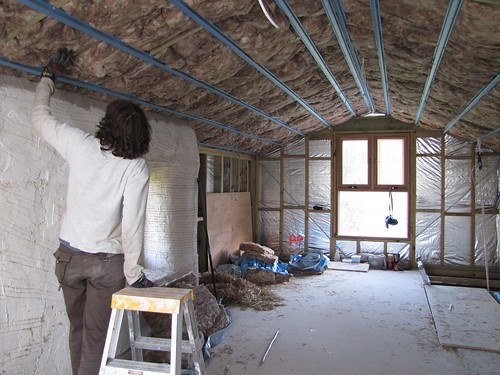Like everything else in your house, your insulation will eventually wear down and become less effective. When this happens, many people say the insulation has gone “bad.” In this helpful guide, you’ll discover how you can tell if your insulation is bad, what it means for your home, and what you can do to fix it.
What Causes Insulation to Go Bad?

The most common type of home insulation is made from fiberglass. While this material seems resilient, it can go bad. Moisture is the biggest threat to fiberglass insulation, and it can come from a variety of sources. A leak in your walls or roof is the most common source of moisture. A gap in your insulation can also cause moisture damage to occur. As warm air moves through the gap, it encounters cold air and causes condensation to form.
Pests and rodents are another threat to insulation because it makes an ideal material for building a nest. Not only can these pests physically damage your insulation as they’re building their nest, but the accumulation of their urine and feces can also have a negative impact on your air quality. Other things that can cause your insulation to go bad include compression over time, cuts, punctures, excessive exposure to UV radiation, and the accumulation of dirt, dust, and debris.
Signs Your Insulation Has Gone Bad
When insulation has gone bad, it can create problems throughout your entire house. The following are warning signs that your insulation is either missing or no longer working as well as it should be.
High Energy Bills
If you take a look at your energy bills over the last few years and notice a gradual increase in costs that you can’t explain, it may be because your insulation has gone bad. Inadequate or completely missing insulation in your attic and crawl spaces causes outdoor air to seep into your home.
In the winter, this means your heater has to run longer to keep your home warm. In summer, your air conditioner has to work even harder to cool down your house. In both cases, your energy costs will go up as your heating and cooling system tries to keep your home comfortable.
Changing Indoor Temperature
An inconsistent air temperature inside your home is another sign your insulation isn’t doing its job anymore. If your bedroom is freezing but your living room feels like the inside of a greenhouse, it may mean the insulation in your attic and crawl spaces has shifted. This allows cold or warm air into your home and prevents your heating and cooling system from effectively doing its job.
Indoor Drafts
If you walk into a room that has all the doors and windows closed but you still feel a draft, it’s likely because poor insulation is letting air enter your home. This typically occurs when you have insulation gaps around door and window frames. However, it can also happen if you have poor attic insulation. This is especially noticeable in winter when the lack of insulation means there’s no barrier between the outside and inside air and cold drafts start swirling around your house.
Water Damage
A leaky roof, flooded basement, burst pipes, blocked vents, or missing vapor barriers can all cause water damage to your insulation. No matter how it happens, wet insulation is a big problem. When the tiny air pockets in insulation become filled with water, they can no longer trap air and the insulation becomes useless. However, that’s not the only issue. Wet insulation can also grow mold that releases dangerous mycotoxins into the air that can make you and your family sick.
Cold Walls, Floors, and Ceilings
Are your walls, floors, and ceilings cold to the touch in the winter? If so, it’s a sure sign that your insulation isn’t working as well as it once was. These parts of your home should feel dry and warm when you touch them. If they don’t, it means cold air from the outside is penetrating your home. On the other hand, if you touch your external walls and they feel cold, this shows your insulation is doing a great job of keeping the warmth inside your home.
Icicles and Ice Dams
If you routinely see icicles and ice dams on your roof in the winter, it’s likely a sign of poor insulation in your attic. When heat from your home escapes through the roof, it melts the snow on top. As the melted snow slides down your roof and into your gutters and eaves, it hits cold temperatures, refreezes, and turns into icicles or ice dams.
While icicles and ice dams seem harmless, they can loosen shingles, damage gutters, and cause water to leak into your house. Having proper insulation in your attic can prevent warm air from escaping your home and stop these icicles and ice dams from forming.
Should You Replace Bad Insulation?
If you recognize some of the common signs of bad insulation in your own home, you may be wondering whether you can simply add more insulation to your home or whether you need to fully replace it. While insulation is designed to last for years, it can settle and lose its effectiveness over time. If your insulation has simply settled and created some gaps, you can add more insulation where necessary. Having an expert come by for a yearly inspection of your insulation will help you know if you need to add more.
On the other hand, if your insulation is wet or damaged, you should immediately have it removed and replaced with new insulation. Additionally, since insulation loses its effectiveness as it gets older, you should consider replacing it every 15 to 20 years.
If you’re concerned about the insulation in your home and worried you may have bad insulation, contact Energy Diagnostics today by sending us a message through our contact form or calling us at (219) 245-5957. We take pride in making sure homes are safe and comfortable, and we can inspect your insulation to ensure it’s working properly.
